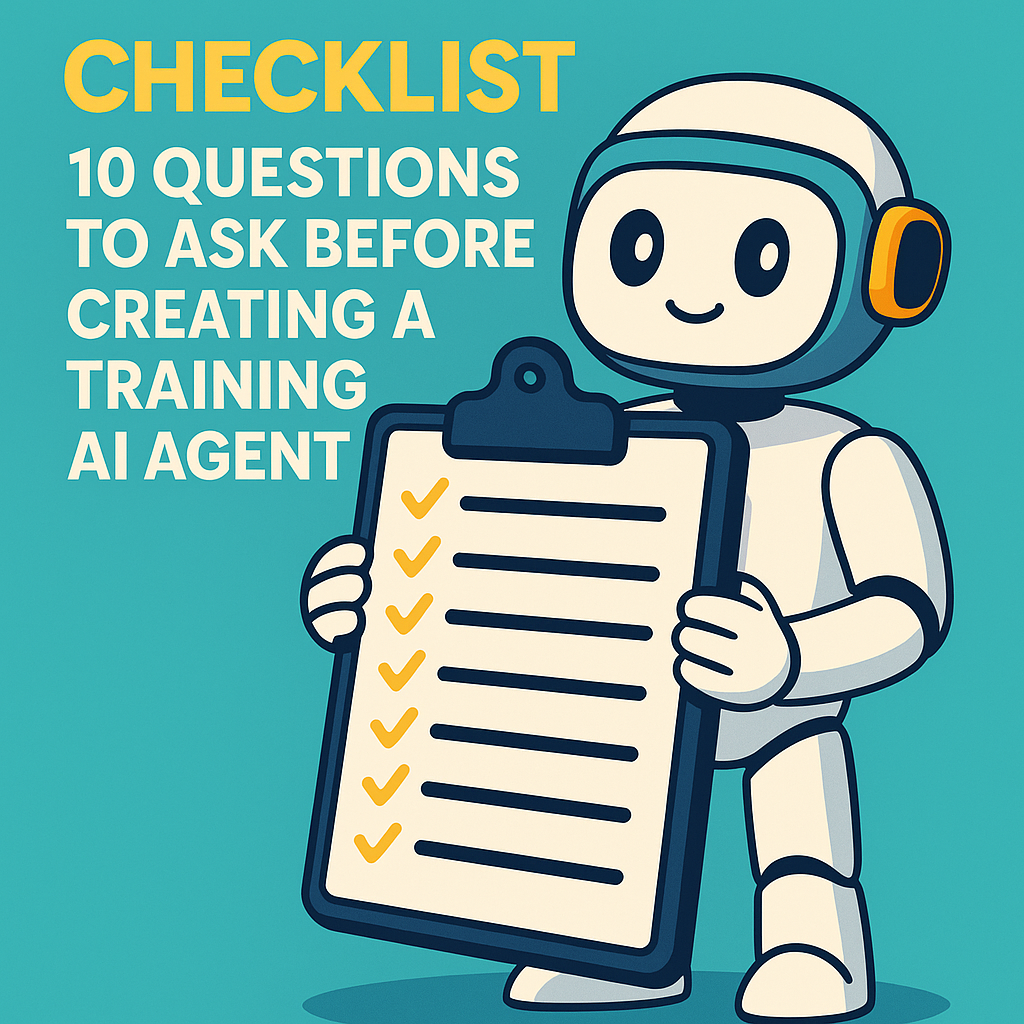AI agents for employee training are a powerful tool. But to ensure they deliver real value, it's important to ask the right questions in advance. This checklist will help you avoid common mistakes and launch a useful, understandable, and effective assistant.
1. Who will the agent train?
Why it matters: The role and experience level of the employees directly affect how information should be delivered.
2. What tasks should the agent perform?
Why it matters: The agent’s tasks determine how you structure content and design learning scenarios.
3. At what stage of the training funnel will the agent be used?
Why it matters: So the agent provides the right amount of help—neither too little nor too much.
4. What sources of knowledge do we already have?
Why it matters: An AI agent is only as good as the quality of the content it’s trained on.
5. What questions do employees already ask most often?
Why it matters: The agent should address real pain points, not just abstract topics.
6. Where will the agent “live”?
Why it matters: Easy access increases usage.
7. Does the agent need to integrate with other systems?
Why it matters: Integrations make the agent more useful but also add complexity.
8. How will we measure the agent’s effectiveness?
Why it matters: Metrics help you improve the agent and demonstrate its value.
9. Who will maintain and update the content?
Why it matters: Outdated content is the biggest enemy of any training system.
10. Are we ready to start small and iterate?
Why it matters: No agent is perfect on day one—iteration is the key to success.
Creating a training AI agent isn’t just about technology—it’s about having a structured, thoughtful approach. This checklist will help you define the right direction and avoid costly rework. Start small, be honest with your answers, and you’ll end up with a tool your team will actually want to use.
1. Who will the agent train?
- New team members?
- Experienced employees?
- Managers or sales reps?
Why it matters: The role and experience level of the employees directly affect how information should be delivered.
2. What tasks should the agent perform?
- Product training?
- Soft skills development?
- Knowledge testing?
- Answering frequently asked questions?
Why it matters: The agent’s tasks determine how you structure content and design learning scenarios.
3. At what stage of the training funnel will the agent be used?
- Onboarding?
- Continuous learning?
- Supporting the launch of a new product?
Why it matters: So the agent provides the right amount of help—neither too little nor too much.
4. What sources of knowledge do we already have?
- Presentations, guides, call recordings, FAQs?
- Do we need to create content from scratch?
Why it matters: An AI agent is only as good as the quality of the content it’s trained on.
5. What questions do employees already ask most often?
- Do we have a database of frequently asked questions?
- What causes the most confusion?
Why it matters: The agent should address real pain points, not just abstract topics.
6. Where will the agent “live”?
- In a messenger like Slack or Teams?
- On an internal portal?
- Inside a CRM or LMS?
Why it matters: Easy access increases usage.
7. Does the agent need to integrate with other systems?
- CRM, customer database, knowledge base?
- Or will it operate as a standalone assistant?
Why it matters: Integrations make the agent more useful but also add complexity.
8. How will we measure the agent’s effectiveness?
- Time spent on training?
- Test results?
- Engagement and feedback?
Why it matters: Metrics help you improve the agent and demonstrate its value.
9. Who will maintain and update the content?
- Is there a content owner?
- How often will updates happen?
Why it matters: Outdated content is the biggest enemy of any training system.
10. Are we ready to start small and iterate?
- Are we launching with an MVP?
- Are we open to testing and feedback?
Why it matters: No agent is perfect on day one—iteration is the key to success.
Creating a training AI agent isn’t just about technology—it’s about having a structured, thoughtful approach. This checklist will help you define the right direction and avoid costly rework. Start small, be honest with your answers, and you’ll end up with a tool your team will actually want to use.
